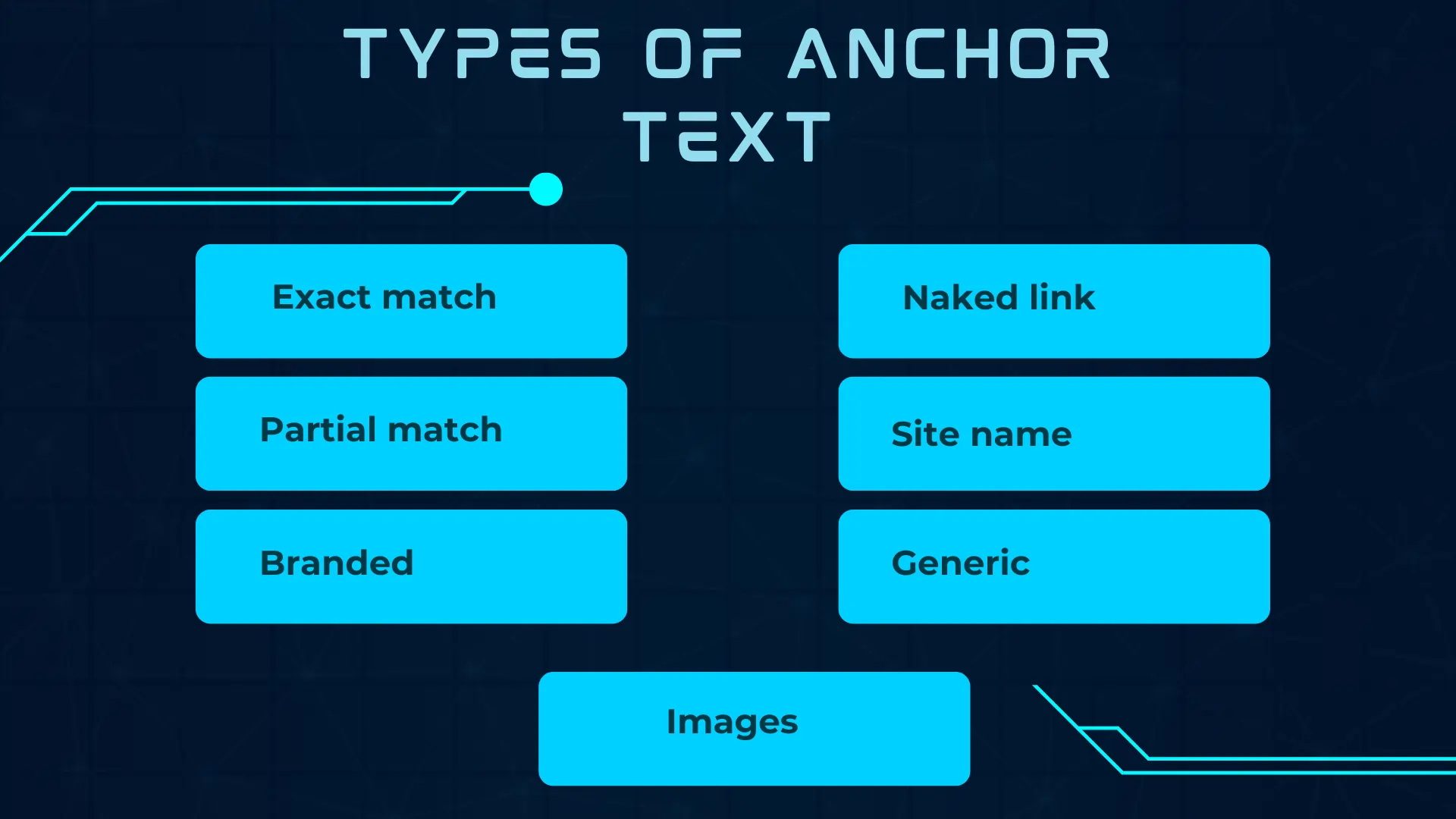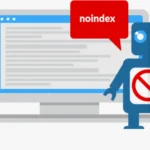What is Anchor Text?

Anchor Text
When optimizing your site to rank higher in search results, you must find innovative ways to improve your website and search engine optimization (SEO) approach. This is where anchor text comes in.
The visible, clickable text inside a hyperlink is known as anchor text. It is typically underlined and highlighted, signifying a connection to an external website or document. It is important for readers and search engines to understand the significance of the link that this text offers, as it gives context for the connected information.
Types of Anchor Text
As you begin to learn more about how to write anchor text, you will discover that there are several types of anchor text you can use, here are some:
- Exact match
- Partial match
- Branded
- Naked link
- Site name
- Generic
- Images
Exact Match
In the world of search engine optimization (SEO), exact match anchor text plays an important role. Anchor text is the clickable part of a hyperlink that leads you to another webpage. When your text exactly matches the keyword or phrase you’re targeting, it’s called exact match anchor text. For example, if you want to rank for “best candy shops,” and your link text says exactly that, you’re using exact match anchor text. This technique can help search engines understand the relevance of your content to specific keywords, helpfully improving your rankings. However, it’s important to use it wisely. Overusing exact match anchor text can appear spammy to search engines and might lead to penalties.
Partial match
It refers to the use of anchor text that includes a part of a keyword or key phrase but not the exact keyword. If your target keyword is “best candy shops,” a partial match anchor text could be “top candy shops.” This technique helps make the content look more natural while still signaling to search engines what the linked page is about. Using partial match anchor text can enhance the user experience by providing relevant and appropriate links and can improve your site’s rank.
Branded
Branded anchor text is a powerful tool for effective search engine optimization (SEO). It involves using a brand name as the clickable text in a hyperlink. Like if you see “360Presence” in an article and it takes you to 360Presence website, that’s branded anchor text. This technique helps increase brand visibility and strengthens brand recognition. When other websites link to your site using your brand name, it signals to search engines that your brand is credible and trustworthy. This can boost your website’s ranking in search results. In a competitive online landscape, using branded anchor text effectively can help you stand out, drive more traffic to your site, and ultimately grow your business.
Naked link
Naked link anchor text refers to hyperlinks where the URL itself is used as the clickable text. Instead of using a phrase, the link appears as the full web address, like “https://360p.co/” This approach can be seen in blog posts, social media, and forums. While naked links are easy to create, they provide no information about the content they lead to, which can affect user experience and SEO performance. Search engines prefer descriptive anchor texts because they help understand the linked page’s relevancy. However, they can be useful in certain situations, such as when sharing URLs that people want to copy or when displaying web addresses for reference. The impact of naked link anchor text can help you make more informed choices when linking to other content in your online writing.
Site name
Site name anchor text is a specific type of hyperlink where the clickable text is the name of a website without including the full URL, such as 360p.co instead of https://360p.co/ This form of anchor text is clean and clear, making it easy for readers to recognize. It also helps in maintaining a neat appearance on the webpage. Site name anchor text plays an important role in SEO (Search Engine Optimization). When used correctly, it helps search engines understand the context and relevance of the link, potentially improving the website’s search ranking in search engines. Linking with site name anchor text from reputable sites can enhance your site’s authority and credibility.
Generic
This type of anchor text is the clickable words in a link that are very general, like “click here,” “read more,” or “learn more.” These words don’t tell you very much about what you’ll find after you click the link. While it’s easy to use these kinds of links but they are not great for search engines. Search engines use the words in links to understand what the linked page is about. If the words are too general, it’s harder for the search engine to figure out, which can make the pages less visible in search engine results.
Images
It refers to the text associated with an image link, always found in the image’s alt attribute or surrounding text. This text helps search engines to understand the context of the image and its relevance to the content of the page. Using effective image anchor text can improve your website’s visibility in search results, making it easier for people to find your content.
You May Also Like Reading: What are Black Hat Techniques?

Importance of Anchor Text
Anchor text helps search engines and people to understand the context. If somebody chooses to click on the link, the link label describes what they will see on the linked page. Although search engines index and rank webpages also on the bases of anchor text.
Relevancy to the content is always an important part. It could cost you website traffic if the linked content is unrelated to the current subject because it creates a poor user experience. Additionally, because the linked information doesn’t benefit the user, search engines will rank your website lower.
A good use of anchor text can boost readers’ confidence in both your brand and the information you post on your website.
What is Anchor Text SEO?
The technique of making your links and anchor text more search engine friendly is known as anchor text SEO. Because it helps search engines in indexing your sites, anchor text is connected and important to SEO point of view. It helps search engines to understand the context and user behavior of your website. You don’t know who links to your website or what wording they choose to use while linking but you have authority over the anchor text on your website. You may raise your page’s rating and facilitate Google’s understanding of your website by optimizing your anchor text for both visitors and search engines.
Healthy Tips For Anchor Text SEO
Relevancy: Make sure the anchor text you choose is appropriate for the page it is linking to. This enhances user experience and helps search engines understand the context.
Diversify Your Anchor Text: Be clear of reusing the same anchor text too much. Instead, employ a range of anchor text, such as keywords, phrases, or even branded terms, that represent various facets of your content.
Employ Descriptive Text: Try to find anchor text that appropriately matches the information on the linked page. In addition to aiding with SEO, precise and strong anchor text gives users a better idea of what to expect when they click the link.
Prevent Stuffing Your Anchor Text with Keywords: While it’s important to include relevant keywords in your anchor text, you shouldn’t overoptimize by stuffing too many keywords into one anchor text. Search engines may consider this spam.
Natural Language: Select anchor text that makes sense in the context of the surrounding material. Natural-sounding anchor text enhances user experience and readability, both of which have a favorable effect on SEO.
Think About Accessibility: Don’t forget about users who depend on assistive devices like screen readers. Make sure the description in your anchor text is sufficient to provide these readers with a clear idea about what the linked content is about.
Conclusion
An important factor in improving user experience and website exposure is anchor text. You may greatly influence your website’s search engine optimization (SEO) and eventually increase organic traffic by implementing strong anchor text techniques.
Understanding the many kinds of anchor text—exact match, partial match, branded, naked link, site name, generic, and image—is important since they all have distinct functions in search engine optimization. Maintaining a balance between these kinds of anchor text and steering clear of keyword stuffing guarantees that it seems relevant and natural to search engines as well as consumers.
You may efficiently optimize your website by adhering to on-page SEO tactics and taking into account the significance of anchor text relevancy, diversity, descriptive content, and accessibility. Recall that a well-done anchor text approach increases website ranking while also building audience trust and confidence in your company. Thus, pay attention to your anchor text—it’s a route to improved SEO and user interaction, not just a string of words.
Thanks For Reading: What is Anchor Text?
Partner With Naumaan Oman
Recent Posts
Working Together Ideas come to life
No matter how big your company is, as you expand and reach new highs you’ll want an agency to have your back. One with a process
360presence@gmail.com

© 2023 360PRESENCE All rights Reserved
















